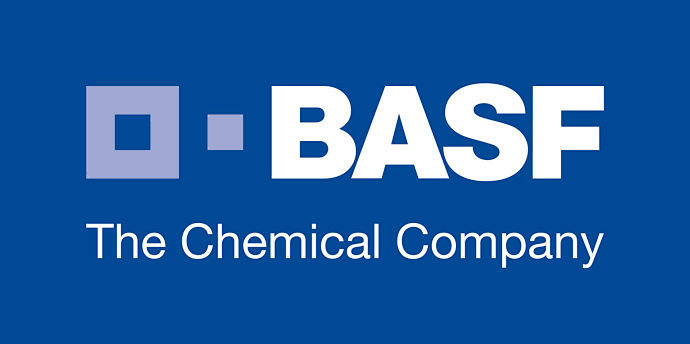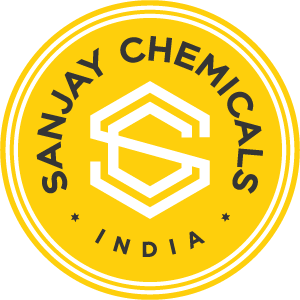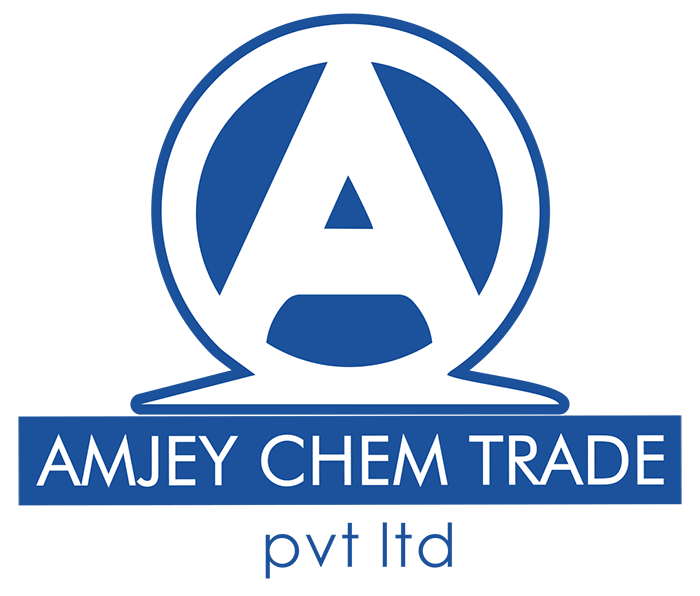| Chinese name |
Hexane |
| English Name |
Hexane |
| Alias |
hexane
n -hexane
n-hexane n-hexane, hexadecane
n -hexane (pesticide residue grade) |
| English alias |
Hexane
OXFORD
n-Hexane
n-Hexane4x1L
MARQUIS TEST KIT
n-Hexane, Environmental
Hexane mixture of isomers
n-Hexane, Spectrophotometric |
| CAS |
110-54-3
92112 -69-1 |
| EINECS |
203-777-6 |
| Chemical formula |
C6H14 |
| molecular weight |
86.18 |
| InChI |
InChI=1/C6H14/c1-3-5-6-4-2/h3-6H2,1-2H3 |
| InChIKey |
VLKZOEOYAKHREP-UHFFFAOYSA-N |
| Density |
0.659 g/mL at 25 °C(lit.) |
| melting point |
-95°C |
| boiling point |
68.95°C(lit.) |
| Flash Point |
30°F |
| water solubility |
insoluble |
| Vapor pressure |
40mm Hg ( 20 °C) |
| steam density |
3.5 (vs air) |
| solubility |
Extremely soluble in ethanol, ether and chloroform. |
| refractive index |
n20/D 1.388 |
| acidity coefficient |
>14 (Schwarzenbach et al., 1993) |
| Storage conditions |
Store at +5°C to +30°C. |
| Stability |
stability. Incompatible with oxidizing agents, chlorine, fluorine, magnesium perchlorate. Highly flammable. Easily form explosive mixtures with air. Note the low flash point. |
| Appearance |
Solid |
| Specific Gravity |
0.660 (20/4 ℃) |
| Color |
Colorless |
| Smell |
Mild gasoline-like odor detectable at 65 to 248 ppm |
| Maximum wavelength (λmax) |
['λ: 200 nm Amax: ≤0.70',
, 'λ: 225 nm Amax: ≤0.10',
, 'λ: 250 nm Amax: ≤0.01'] |
| Merck |
14,4694 |
| BRN |
1730733 |
| explosion limit value |
1.0-8.1%(V) |
| Exposure Limits |
TLV-TWA 50 ppm (~175 mg/m3) (ACGIH),500 ppm (~1750 mg/m3) (OSHA); IDLH5000 ppm (NIOSH). |
| physicochemical properties |
Colorless volatile liquid. Soluble in water, soluble in ethanol, soluble in ether, chloroform, ketones and other organic solvents. |
| Dangerous Goods Signs |
F-Inflammable
Materials Xn-Hazardous Materials
N-Environmentally Hazardous Materials |
| Risk Terms |
R11-Highly flammable.
, R38-Irritated skin.
, R50/53-Very toxic to aquatic organisms and may have long-term adverse effects on the water environment.
, R65-May cause lung damage if swallowed.
-R67-Vapor may cause drowsiness and dizziness.
, R62-Risk of impaired fertility.
to R51/53-Toxic to aquatic organisms, may have long-term adverse effects on the water environment.
R48/20 -R36/37/38-Irritating to eyes, respiratory system and skin. |
| Security terminology |
S9-Keep container in a well-ventilated place.
, S16-Keep away from ignition sources.
, S29-Do not pour into the drain.
, S33-Take measures to prevent static electricity.
-S60-The substance and its container must be disposed of as hazardous waste.
S61-Avoid release to environment. Refer to Special Instructions/Safety Data Sheet.
-S62-If swallowed, do not induce vomiting; seek medical advice and show the container or label.
, S36/37-Wear appropriate protective clothing and gloves.
-S45-In case of accident or feeling unwell, seek medical attention (if possible, show their label).
-S36/37/39-Wear appropriate protective clothing, gloves and goggles or masks.
, S53-Avoid contact and use with special instructions. S26-
After contact with eyes, rinse immediately with plenty of water and seek medical advice. |
| Dangerous Goods Transport Number |
UN 3295 3/PG 2 |
| WGK Germany |
3 |
| RTECS |
MN9275000 |
| FLUKA BRAND F CODES |
3-10 |
| TSCA |
Yes |
| Customs number |
29011000 |
| Hazard Class |
3 |
| Packing Group |
II |
| Upstream raw materials |
petroleum ether |
| Downstream Products |
Pyridaben |
n-Hexane -Introduction
1. Properties:
Hexane is a colorless liquid, at room temperature and pressure with a special smell. 2.
its density is low. 3.
Hexane is a non-polar solvent, insoluble in water, but can be with many organic (such as fats and oils) miscible. 4.
Hexane is flammable and can form a flammable mixture with air.
Uses: 1. Hexane is a very commonly used
industrial solvents, widely used in coatings, cleaning agents, paints and glue and other fields. 2. It is also commonly used as
chemical laboratory extractant and reaction medium. 3.
Hexane also can be used as gas chromatography separation and detection of organic compounds.
Preparation: of
1. Hexane is usually prepared by alkylation of alkanes. A common preparation method is to react ethane with hydrogen chloride in the presence of a catalyst to form 1-chloropropane, which is then hydrogenated to give hexane. There are other
preparation of hexane, such as through the amination reaction and cyclization reaction.
Safety Information: 1.
Hexane is a flammable liquid and should be kept away from open flames and high temperatures. Avoid contact with fire sources and oxygen, oxidants and other substances.
2. Use hexane, should be equipped with appropriate protective measures, such as wearing gloves, goggles and wearing protective clothing. 3. Avoid inhaling hexane vapor, as it may cause respiratory irritation and damage.
4.
Hexane should be stored in a sealed container, away from fire sources and strong oxidants.
n-Hexane -Substance Toxicity
The main target of hexane is the central nervous system. Exposure to high concentrations of hexane vapor or evaporating liquids may cause dizziness, headache, dizziness, drowsiness, confusion, and transient memory loss. Long-term, high-concentration exposure may also lead to neurological damage and cognitive decline. Hexane
is also highly flammable and forms a flammable gas mixture with air, which can easily cause fire and explosion. At the same time, hexane can cause irritation to the skin and eyes, and contact with hexane may cause skin dryness, itching, erythema, ulcers and other uncomfortable reactions.
In summary, hexane has a certain substance toxicity, has a damaging effect on the central nervous system, and has the characteristics of flammability and irritation. Therefore, when using hexane, attention should be paid to taking appropriate protective measures, such as wearing protective gloves and glasses, and ensuring a well-ventilated operating environment to avoid harm to the human body and the environment.
n-Hexane -Isomers
1. n-Hexane: The molecular structure is CH3-CH2-CH2-CH2-CH2-CH3, also known as n-hexane or n-pentane.
2-methyl pentane: The molecular structure is CH3-CH2-CH(CH3)-CH2-CH3, where the methyl group (CH3) is located on the second carbon of the carbon chain.
3.3-Methylpentane: The molecular structure is CH3-CH(CH3)-CH2-CH2-CH3, where the methyl group (CH3) is located on the third carbon of the carbon chain.
4. 2,3-dimethylpentane: The molecular structure is CH3-CH(CH3)-CH(CH3)-CH2-CH3, in which there are two methyl groups (CH3), which are located in the carbon chain of the 2nd and 3rd carbon.
Hexane -Oxidation and Substitution Reaction
Hexane oxidation reaction usually requires oxygen or oxidant participation, common oxidation reactions are combustion and oxidation.
1. Combustion reaction: Hexane burns in the presence of sufficient oxygen to produce carbon dioxide and water. This reaction releases a large amount of energy and is one of the important applications of hexane as a fuel.
C6H14 +19/2 O2 → 6 CO2 +7 H2O 2. Oxidolysis reaction: Oxidolysis reaction of hexane occurs at high temperature and in the presence of catalyst. This reaction breaks down the hexane into smaller molecules of hydrocarbons and gaseous products. The substitution reaction
the
C6H14 → C2H4 +2CH4 + H2 + C2H6 + C6H6
hexane refers to a reaction in which a hydrogen atom in hexane is substituted by another functional group or atom. Common substitution reactions include haloalkylation, nitration, hydrogenation, oxidation, etc.
1. haloalkylation reaction: hexane haloalkylation reaction occurs in the presence of halogen (such as bromine or chlorine). This reaction will replace the hydrogen atoms in hexane with halogen atoms to form the corresponding alkyl halides.
C6H14 + X2 → C6H13X + HX (where X represents halogen)
2. nitration reaction: hexane nitration reaction occurs in the presence of nitric acid. This reaction will replace the hydrogen atom in hexane with a nitro group to form the corresponding nitro compound.
C6H14 + HNO3 → C6H13NO2 + H2O 3. Hydrogenation: Hexane is hydrogenated in the presence of hydrogen by the action of a catalyst. This reaction will saturate the alkene bond in the hexane or the double bond in the aromatic ring to produce the corresponding alkane.
C6H14 + H2 → C6H12
4. oxidation reaction: hexane can be oxidized under the action of oxygen or oxygen oxidant. For example, hexane is oxidized in the presence of hydrogen peroxide to produce hexanone.
C6H14 + O2 → C6H12O + H2O
hexane chemical properties are rich, can through different reactions with other compounds to expand its chemical synthesis and industrial applications in the application range.
Last update: 2024-04-09 19:43:38
n-hexane -quality index analysis
1. Purity: The purity of hexane indicates its purity and can be evaluated by determining its content of impurities. Common detection methods are gas chromatography and infrared spectroscopy. High purity hexane is commonly used in laboratory research and chemical analysis.
2. Water content: The water content of hexane refers to the content of water in it. Water will affect the nature and use effect of hexane. The commonly used detection methods are 1‰ titration and coulometric titration.
3. Acid value: the acid value of hexane indicates the content of organic acid, which is commonly used for the determination of phenol phenolphthalein method. A high acid value may have an impact on certain applications, such as for the preparation of solvents.
4. Oxides: Hexane is susceptible to oxidation when exposed to air, producing oxidation products. The commonly used detection methods are silver salt titration and silver peroxide colorimetric method.
5. Chromaticity: The chromaticity of hexane refers to the depth of its color and is usually measured using a colorimeter. High color may indicate the presence of impurities.
n-Hexane -Limit
from a safety and environmental point of view, the limit of hexane is very important. Because hexane is flammable, its vapor forms a flammable mixture with air, which may explode when exposed to an open flame or high temperature. In addition, hexane is also a volatile organic solvent, which is harmful to health and the environment.
In industrial production and use, it is often necessary to control the concentration of hexane in the air. For example, in the workplace or indoor air quality monitoring, the concentration of hexane can be limited to no more than a certain concentration per cubic meter of air, usually In terms of volume parts per million (ppmv) or milligrams per cubic meter (mg/m³).
In addition, in the application of hexane products and materials, there are usually corresponding limit requirements, such as automotive fuel, paint, glue and other products of the relevant standards will specify hexane content limit.
n-Hexane -Properties
Colorless volatile liquid. Soluble in water, soluble in ethanol, soluble in ether, chloroform, ketones and other organic solvents.
n-hexane -preparation
platinum reformer raffinate oil (containing hexane 11% ~ 13%) separation. The raffinate oil is separated by distillation, light components are removed and recombined to obtain a fraction containing 60% ~ 80% of n-hexane. Using double-tower continuous distillation, and then hydrogenation by catalyst, to remove benzene and other unsaturated hydrocarbons, qualified n-hexane.
n-Hexane -Uses
is mainly used as a solvent, such as propylene polymerization solvent, rubber and coating solvent, pigment thinner. For soybean, rice bran, cottonseed and other edible oils and spices in the oil extraction. Or high octane fuel.
n-Hexane -Safety
mice inhaled 4h LCsa:48000 × 10-6; Rats oral LD50: 32.Og/kg. Hexane is low toxic, but its toxicity is larger than octyl hexane, and has high volatility, high fat solubility, and accumulation. The toxic effect is a mild inhibitory effect on the central nervous system and a stimulating effect on the skin and mucous membranes. Splash into the eye can cause conjunctival irritation. Long-term exposure can cause multiple peripheral neuropathy. Staff should be well protected, if accidentally touched the skin and eyes, should be immediately washed with a large amount of flowing water.
![]() +086 1911-7288-062 [ CN ]
+086 1911-7288-062 [ CN ]



































































































